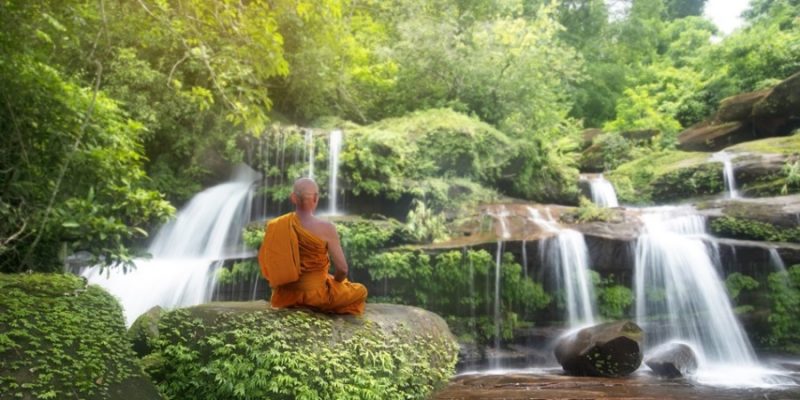
Nowadays, Tantra often immediately calls upon associations of unbridled and liberated sex. And although topics and practices around gender, sex and sexuality are part of Tantra — especially of what today is called Neo-Tantra, Sacred Sexuality, and Tantric Sex — Tantra and Tantric rituals and activities involve much, much more than only sex and our sexuality.
Tantra
Tantra is a philosophy, religion, lifestyle, and a set of practices that started to rise on the Indian public stage around 500 CE, being a mixture of both esoteric and mainstream religious traditions of Hinduism and Buddhism. What is essential to be understood is that the meaning of Tantra changed many times, having many interpretations during the last 1,500 years, depending on the lineages, writers, researchers, esoteric sects, Tantra schools, or movements, and so on.
Over time, Tantra has been positioned as religion, sects, philosophy, doctrine, esoteric practices and rituals, deep understanding of life, sexual decadence, an spiritual enlightenment tradition, Deity worshiping techniques and devotion, understanding ultimate reality, and sacred teachings, among other connotation, implications, and associations.

The word Tantra comes from the ancient Indian Sanskrit language and it’s generally accepted that it has a root-meaning of “to weave,” “to compose,” “method” or “instrument” referring to educational texts, in many cases in the form of a dialogue between a God and a Goddess.
Many of those texts, the so-called Tantras (also called Agamas or Samhitas), addressed topics and rituals that went beyond accepted social and religious boundaries, such as sexual rites, the use of intoxicants, and the use of human remains and ashes in rituals, thereby overruling the rigid Indian caste system. In addition to its rebellious and anti-establishment character, the Tantras were also sacred instructional texts that described rituals to invoke powerful deities, while also giving the tools and techniques to attain Spiritual Enlightenment.
The scope of Tantra is immensely vast, which explains the contemporary confusion of what Tantra actually stands for. Tantra deals with spiritual, cosmological, and religious topics, addressing the evolution and history of the world, male and female Gods and Goddesses, ritual worship, magic, sorcery, divination, esoteric practices, the awakening of Kundalini Energy, techniques for the purification of body and mind, self-realization, spiritual enlightenment, and divine sexuality, using a variety of techniques and methods, such as rituals, sacred texts, pujas, exercises, meditation, breathwork, visualizations, sexuality and sexual intercourse, chanting, devotion, Mandalas, Mantras, Yantras, Nyasas, Yoga, dance, and massage, among other tools.
Tantra tried (and still tries) to unify opposites, being in essence a non-dual philosophy, by proclaiming that everything is sacred, even that what is considered blasphemous, dirty or impure. Very often, learning Tantra was (and still is) connected to a teacher, or Guru, who supports and guides students or laymen towards spiritual transformation, or even to attaining worldly and supernatural powers, and longevity.
Tantric Yoga (or Tantra Yoga) became very popular around the 10th century CE, mostly because of its claims on attaining longevity and even invulnerability. Historically, Tantric Yoga together with Ascetic Yogic and Meditation traditions formed what is now Hatha Yoga, which can be translated as Yoga of Retaining Force, or Cultivating Force or Forceful Yoga.
Yogis used multifaceted poses, postures, sequences and muscular exercises to control the flow of breath and vital Life Force (Prana or Qi). A very important part of Tantric Yoga was the emphasis on the awakening of Kundalini Shakti spiritual energy with the goal to come to liberation from suffering and the cycle of life, death and rebirth. Kundalini visualizations were an important aspect of these Tantric Yogic practices.
In medieval India, Tantra grew steadily, and Tantric temples were built as places of worship of Tantric deities which usually were incarnations of the supreme deities Vishnu, Shiva and Shakti, such as the Goddesses Kali, Durga, Tara, Bhairavi, or Parvati, and (male) Gods like Bhairava, Amoghasiddhi, Manjusri, or Ganesha, among many, many others.
A very important observation is that Tantric Hindu and Buddhist traditions have later strongly influenced other Asian religious traditions such as Jainism, Tibetan Bon, Chinese and Japanese Taoism (Daoism), and Japanese Shinto. This spread of Tantric ideas and philosophy outside of India took place primarily from about 700 CE to 1300 CE. The historic dissemination of Tantra illuminates well the often confusing narratives around the contemporary Neo-Tantra movement, which mixes elements from both Indian and Chinese Taoist Healing, Esoteric and Religious traditions.
Sacred feminine power is a very important part of the Tantric worldview, one wherein material reality (the male aspect) is seen as being animated by Shakti energy, the unlimited, divine feminine force. This also explains the rise of Goddess worship in medieval India (and today reappearing in the Neo-Tantra movement). Moreover, powerful, violent and erotic Tantric Goddesses were a fierce, revolutionary and rebellious challenge to traditional role models of women.
Another important theme of Tantra is the “divine union” of Shiva (male energy) and Shakti (female energy), well-known as represented by Lingam and Yoni iconography. Tantric philosophy and practices use gender and sexuality to express the two opposing qualities that need to be cultivated on our path towards enlightenment, wisdom and compassion. In Tantra, these opposites are visualized as a Goddess and a God in sexual union.
The God Shiva represents the constitutive material elements of the universe, being and pure consciousness, while the Goddess Shakti is the dynamic energy, the manifestation and love, which makes these elements come to life and act. Ultimately, Shiva and Shakti are two faces of One Being, and either one is powerless without the other.
Today, Tantra is still very much alive in India and one can find a variety of both smaller and major Hindu sects, such as the Aghoris, but also the mainstream sects Shaktism and Shaivism, which still practice or draw heavily on Tantra rituals or conceptions.
Neo-Tantra
The British rule of India developing across the country as from 1757, gradually brings Indian religious, spiritual and philosophical ideas and concepts, including Tantra, to the West. Although often misunderstood, frowned upon, and misinterpreted, the facts remain that Indian spirituality began to influence Western philosophy, spirituality and religion substantially.

In the UK and the US in the 1960s and 1970s, Tantra had a major revival and impacted politics and society, becoming a movement that could be interpreted as anti-capitalist, ecological, spiritual, and free-love minded. Tantra was also strongly reimagined as a movement and way of life that could challenge rigid attitudes and morality towards sex, while lifting sexuality to a spiritual level and hence being associated with so-called Sacred Sexuality.
The movement got the overall label Neo-Tantra, which apart from ancient Tantric, Yogic, and Taoist ideas, draws from a wide range of more contemporary practices, such as Bioenergetic Analysis, Breathwork, modern massage and bodywork, and modern Sexual Therapy, inspired by psychologists, bodyworkers and teachers such as Wilhelm Reich, Carl Jung, Andro Andreas Rothe, Carl Rogers, Alexander Lowen, Mantak Chia, Joseph Kramer and Annie Sprinkle, to give some examples of influential propagators.
An interesting fact about contemporary Tantra Massage (or Tantric Massage) is that there are no references found about it in traditional, ancient Tantric literature (up to now, anyway). That doesn’t mean it didn’t exist in some form. Massage in India (forms of Ayurvedic massage) appears in Sanskrit texts that were written sometime between 1500 and 500 BCE. Thus, it seems plausible that Tantra practitioners applied massage also, and following the principles of Tantra (wholeness and completeness), such massages perhaps simply included genital and erogenous work naturally, without explicitly needing to record the fact.
Nevertheless, today, it sometimes seems that Tantra has gone completely wild. Many offerings of Tantric Massage therapy for instance, are very often only focused on erotic pleasure elements, incorrectly using labels as Tantric Massage, Sacred Yoni Massage, Lingam Manhood Discovery, or Tantric G-Spot Prostate Massage, just to give a fashionable and attractive name to what are plain Happy Ending or Full Service sexual intercourse services.
Additionally, modern Tantric Retreats have a large “fuzzy factor,” often requiring a study in itself to understand what’s actually offered and why. Of course, this is not only to blame on the organizers, it’s rather that the scope of Tantra is vast and varied, not to speak of differences such as White, Red, Dark and Black Tantra, which then reflects in the dazzling and confusing content of the Tantra Retreats being offered.
In any case, it has become increasingly hard to discern what’s what and what’s not, and the number of Tantric trainings, treatment offerings and Tantra Retreats is simply astonishing, with regular additions of new schools, trainers, therapists, and treatment modalities.
For what it is, in the past few decades it has become crystal clear that the world, not only the West, still struggles with questions around suppressed and distorted sexuality, sensuality, and eroticism, and tries to find updated ways to solve those.
















